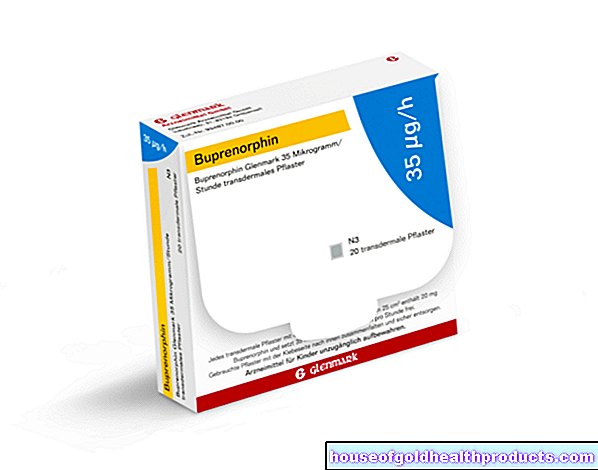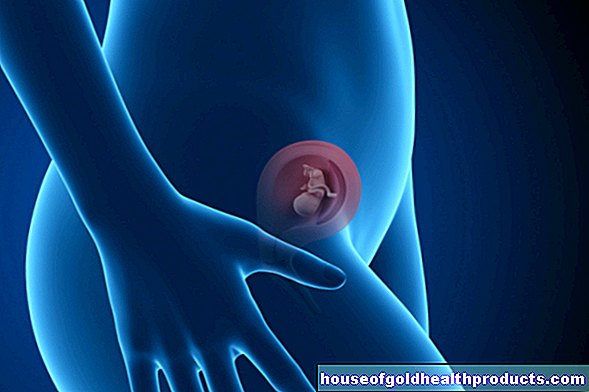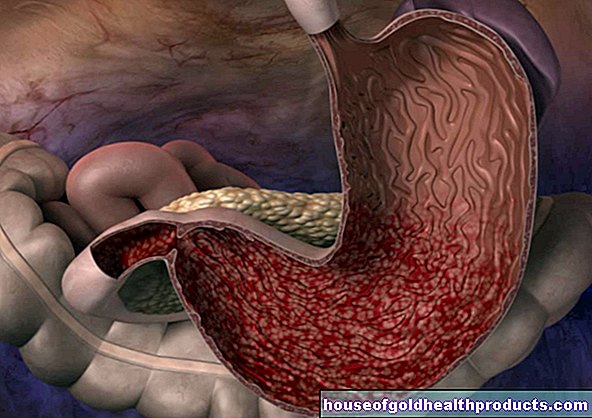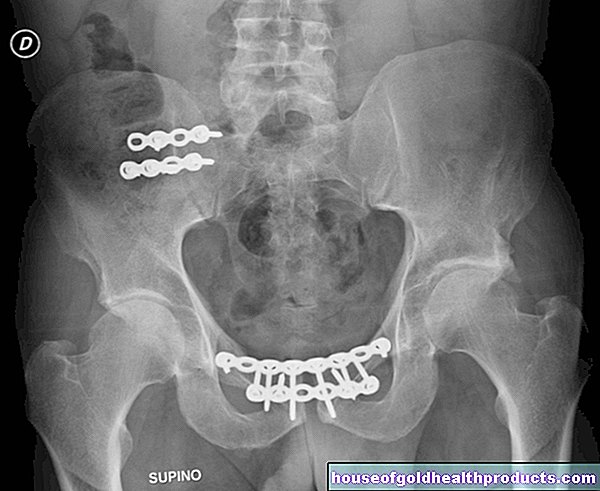Lercanidipine
Updated onBenjamin Clanner-Engelshofen is a freelance writer in the medical department. He studied biochemistry and pharmacy in Munich and Cambridge / Boston (USA) and noticed early on that he particularly enjoyed the interface between medicine and science. That is why he went on to study human medicine.
More about the experts All content is checked by medical journalists.Lercanidipine is a so-called calcium channel blocker from the subgroup of dihydropyridines. It is used to treat high blood pressure. As an active ingredient of the third generation, it is better tolerated and fewer side effects than the precursor substances. Here you can read everything you need to know about the effects and use of lercanidipine, side effects and interactions.
This is how lercanidipine works
Lercanidipine is an active ingredient from the group of calcium channel blockers, more precisely from the group of dihydropyridines. It has a vasodilatory effect and in this way lowers blood pressure. Lercanidipine is therefore an antihypertensive agent. By lowering blood pressure, it prevents serious secondary diseases such as heart attacks and strokes.
In the muscle cells in the wall of arteries, the influx of calcium leads to tension, as a result of which the blood vessels constrict - blood pressure rises. In the case of high blood pressure, the intake of lercanidipine can inhibit this influx of calcium by blocking the calcium channels. As a result, the blood vessels remain relaxed and the blood pressure is no longer permanently elevated.
The first calcium channel blockers that were developed also had an effect on the "timing" of the heartbeat, which was also mediated by calcium - they slowed the heartbeat. However, newer active ingredients such as lercanidipine only have a very targeted effect on the calcium channels in the wall of arteries and do not affect the heartbeat.
Uptake, breakdown and excretion
The active ingredient is taken in tablet form with a meal at about the same time each day. It is important to take it with food because it allows lercanidipine to be better absorbed into the blood through the intestinal wall.
The highest blood levels are reached one to three hours after ingestion. The very fat-soluble active ingredient forms a depot in the body, which means that the effect lasts longer than with calcium channel blockers that are more water-soluble.
The degradation takes place by enzymes in the liver (especially CYP3A4). The breakdown products are excreted in the urine and stool. About eight to ten hours after ingestion, half of the absorbed active ingredient is broken down.
When is lercanidipine used?
The antihypertensive drug lercanidipine is approved for the treatment of mild to moderate essential hypertension. The term "essential" means that the increased blood pressure was not caused by avoidable causes such as an underlying disease, pregnancy or medication.
This is how lercanidipine is used
Lercanidipine is taken in the form of tablets. Because of its depot effect, it only needs to be swallowed once a day. It should be taken with a meal because the active ingredient is then better absorbed.
Dosages between ten to twenty milligrams of lercanidipine are common. The maximum antihypertensive effect builds up slowly and is reached approximately two weeks after the start of therapy.
If a stronger effect is desired, the active ingredient is combined with other blood pressure drugs (e.g. beta blockers, ACE inhibitors or dehydrating agents) - increasing the dose of lercanidipine would not improve the effect.
Treatment of high blood pressure must be long-term.
What side effects does lercanidipine have?
Lercanidipine side effects are comparatively rare. For example, one in a hundred to a thousand people treated develops water retention in the tissue (edema), a feeling of heat, dizziness, headache, palpitations and stumbling of the heart.
In one in a thousand to ten thousand people treated, side effects such as drowsiness, tightness of the heart, nausea, indigestion, diarrhea, vomiting, skin rashes, muscle pain, increased urination and fatigue appear.
What should be considered when taking lercanidipine?
Contraindications
Lercanidipine must not be used in:
- decreased ejection rate from the heart
- Women of childbearing potential without a safe method of contraception
- Heart failure (heart failure)
- unstable angina pectoris (chest tightness)
- severe liver or kidney impairment
- Patients who have had a heart attack in the past four weeks
- simultaneous use of strong CYP3A4 inhibitors (including grapefruit juice, see below)
- taking ciclosporin (immunosuppressant) at the same time
CYP3A4 inhibitors are substances that block the enzyme system in the liver that breaks down lercanidipine. If taken at the same time, the antihypertensive agent can accumulate in the body. Examples of CYP3A4 inhibitors are certain anti-fungal agents (ketoconazole, itraconazole), some antibiotics (erythromycin, clarithromycin), some HIV drugs (e.g. ritonavir) and grapefruit juice.
Interactions
In addition to the CYP3A4 inhibitors mentioned above, there are also substances that have the opposite effect on the CYP3A4 enzyme system - they "induce" it. That is, they ensure that more of the enzyme is produced. This causes lercanidipine to break down faster, which affects its effectiveness.
Examples of CYP3A4 inducers are the epilepsy drugs phenytoin and carbamazepine, certain drugs against cardiac arrhythmias (amiodarone, quinidine), the antibiotic rifampicin and St. John's wort.
If lercanidipine is used together with digoxin (a medicine for treating heart failure), the plasma levels of digoxin may increase, making it more effective.
The consumption of alcohol can increase the antihypertensive effects of lercanidipine.
Age restriction
Lercanidipine is approved from the age of 18 years. The safety and effectiveness of therapy in children and adolescents under 18 years of age has not been established.
Elderly patients and patients with hepatic impairment may need a reduced dose of lercanidipine as their excretion is slower.
pregnancy and breast feeding period
As the data on use during pregnancy and breastfeeding are still insufficient, lercanidipine should not be taken during this time.
How to get medication with lercanidipine
Preparations with the active ingredient lercanidipine require a prescription in Germany, Austria and Switzerland in every dosage and pack size.
How long has lercanidipine been known?
The first calcium channel blockers were developed in the early 1970s by the scientist Albrecht Fleckenstein in Freiburg in collaboration with a number of pharmaceutical companies. Lercanidipine was first approved as a third-generation active ingredient in 2000.
In addition to fixed combinations with other antihypertensive drugs, there are also preparations that only contain the active ingredient lercanidipine. Since the patent expired, various generic products have come onto the market.
Tags: teenager book tip menshealth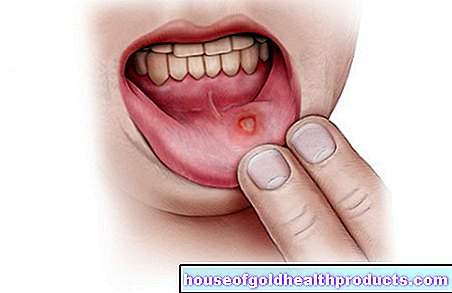

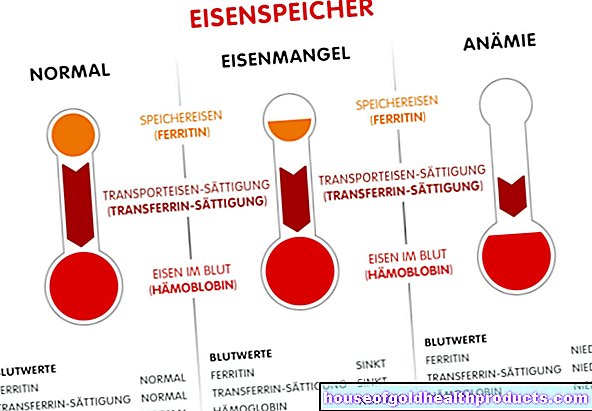






.jpg)
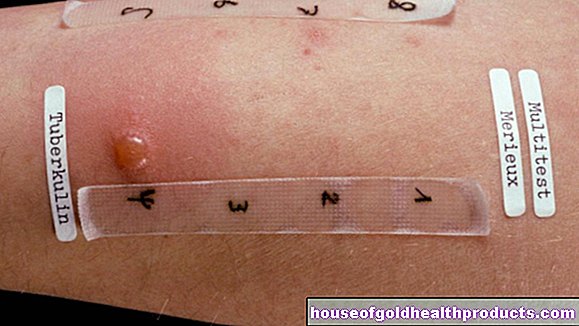





.jpg)
